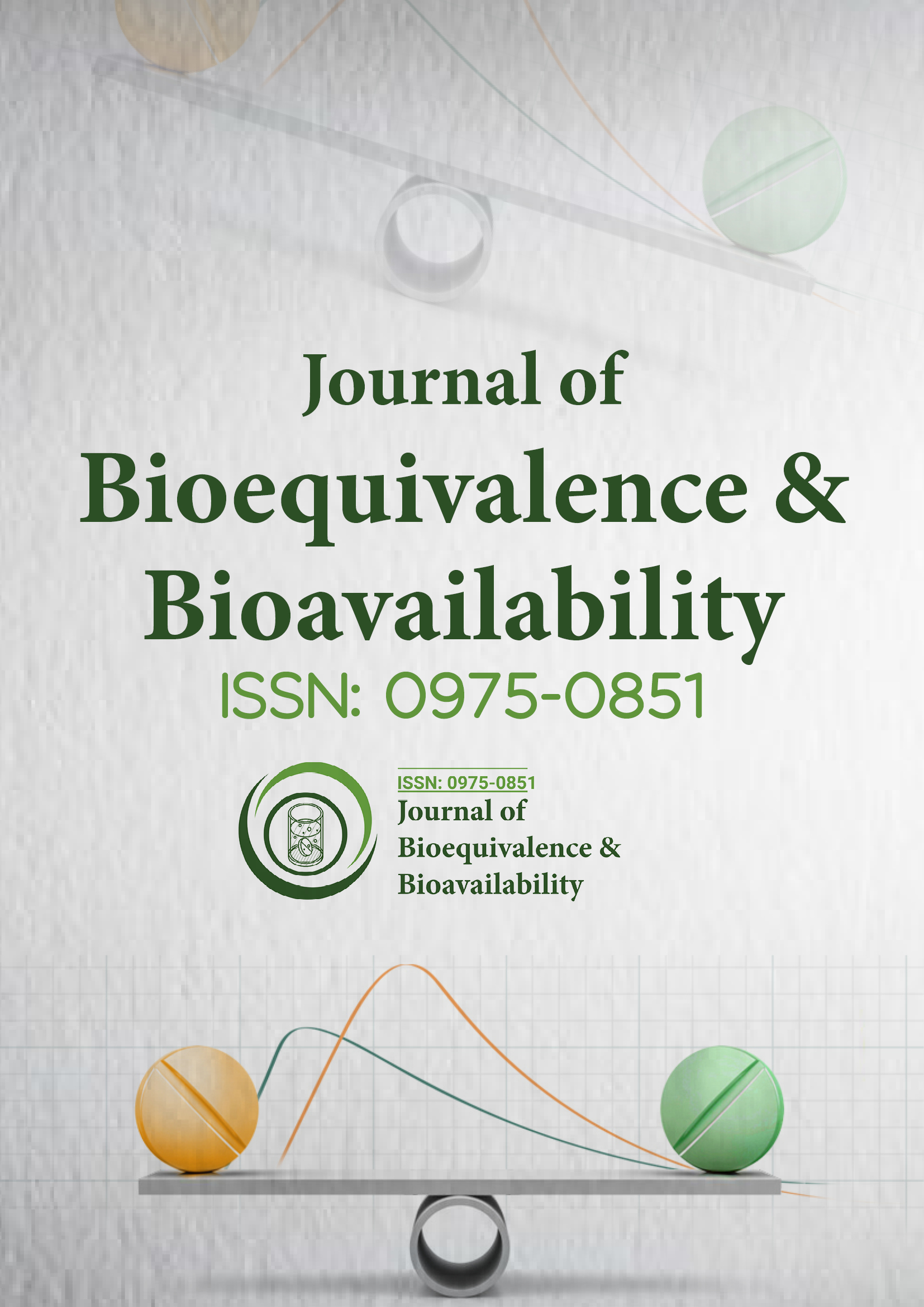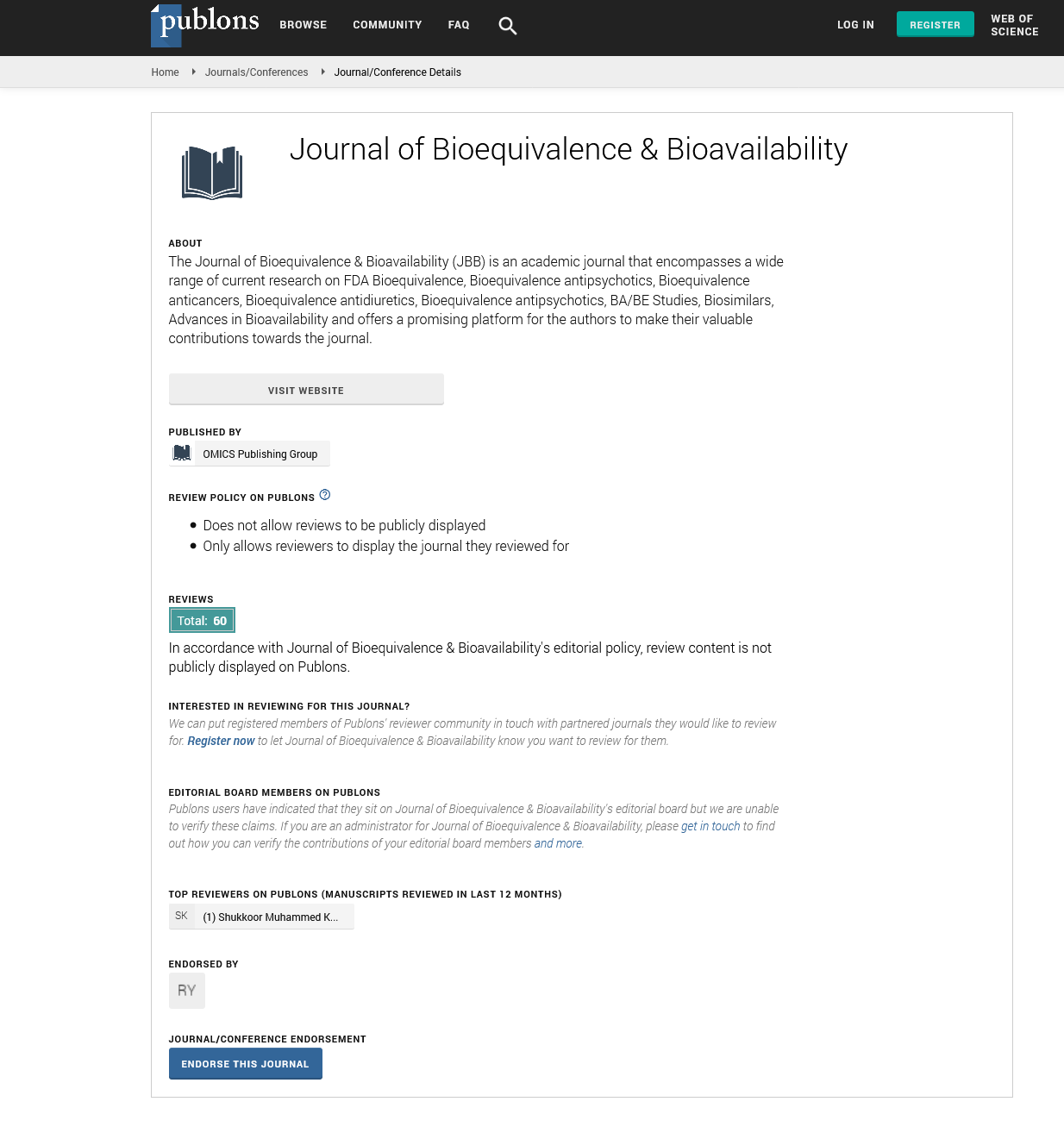Indexed In
- Academic Journals Database
- Open J Gate
- Genamics JournalSeek
- Academic Keys
- JournalTOCs
- China National Knowledge Infrastructure (CNKI)
- CiteFactor
- Scimago
- Ulrich's Periodicals Directory
- Electronic Journals Library
- RefSeek
- Hamdard University
- EBSCO A-Z
- OCLC- WorldCat
- SWB online catalog
- Virtual Library of Biology (vifabio)
- Publons
- MIAR
- University Grants Commission
- Geneva Foundation for Medical Education and Research
- Euro Pub
- Google Scholar
Useful Links
Share This Page
Journal Flyer

Open Access Journals
- Agri and Aquaculture
- Biochemistry
- Bioinformatics & Systems Biology
- Business & Management
- Chemistry
- Clinical Sciences
- Engineering
- Food & Nutrition
- General Science
- Genetics & Molecular Biology
- Immunology & Microbiology
- Medical Sciences
- Neuroscience & Psychology
- Nursing & Health Care
- Pharmaceutical Sciences
Drug interactions affecting drug bioavailability
10th World Congress on Bioavailability and Bioequivalence
April 08-09, 2019 Abu Dhabi, UAE
Royida Al Marastani
SEHA-Ambulatory Healthcare Services, UAE
Scientific Tracks Abstracts: J Bioequiv Availab
Abstract:
Drug-drug interactions (DDIs) are increased especially with polypharmacy patients leading to increased or
decreased the clinical efficacy or increased the risk of the side effects or even the toxic effects.DDI can be
classify into two classes pharmacokinetic and pharmacodynamic which affects the bioavailability of the drugs
Example 1: H2 antagonists (e.g.ranitidine), antacids (e.g., aluminium hydroxide and sodium bicarbonate) and
PPI (e.g., omeprazole, esomeprazole, pantoprazole) that increase the gastric pH lead to facilitate the absorption
of beta-blockers .
Example 2: Antifungal agents (e.g., ketoconazole or itraconazole), requires an acidic environment, therefore,
their co-administration with drugs able to increase gastric pH, may cause a decrease in both dissolution and
absorption of antifungal drugs. Therefore, antacid or anticholinergics, or PPI might be administered at least 2
h after the administration of antifungal agents.
Example 3: The administration of drugs able to increase the gastric pH with ampicillin, atazanavir, clopidogrel,
diazepam, methotrexate, vitamin B12, paroxetine and raltegravir are not recommended.
Example 4: The administration of drugs that decrease the gastric pH (e.g., pentagastrin), may have an opposite effect.
Example 5: Tetracyclines (e.g., doxycycline or minocycline) in the digestive tract can combine with metal ions
(e.g., calcium, magnesium, aluminum, iron) to form complexes poorly absorbed. Consequently certain drugs
(e.g., antacids, preparations containing magnesium salts, aluminum and calcium preparations containing
iron) can significantly reduce the tetracyclines absorption.
Example 6: Antacids reduce the absorption of fluoroquinolones (e.g., ciprofloxacin), penicillamines and
tetracyclines, because the metal ions form complexes with the drug. So antacids and fluoroquinolones should
be administered at least 2 h apart or more.
Example 7: Metoclopramide, may accelerate gastric emptying, hence decreasing the absorption of digoxin
and theophylline whereas it can accelerate the absorption of alcohol, acetylsalicylic acid, acetaminophen,
tetracycline and levo-dopa.
Biography :
Royida Al Marastani is a senior pharmacist with more than thirty years of experience in the UAE in Abu Dhabi in Primary Health Centers (PHC), Urgent Care Center (UCC), Ambulatory Health Services (AHS) and MSc in Clinical Pharmacy UK. A lecturer from 2003 in Ministry of Health (MOH), in CPE/CME pharmacist’s program from 2011 in SEHA/ Ambulatory Healthcare Services (AHS). Conducting research, conference abstracts, invited presentations in the national & international conferences, focusing on pharmaceutical care based on safety and efficacy of the medications.
E-mail: ralmarastani@seha.ae

